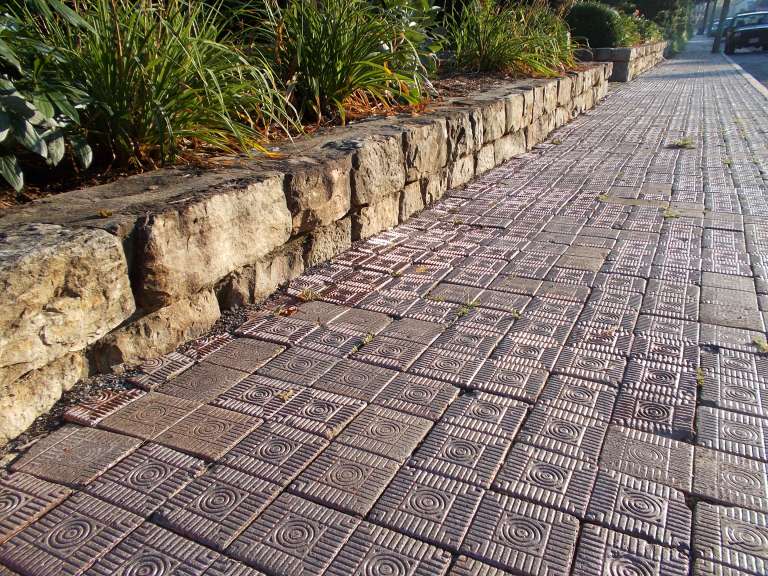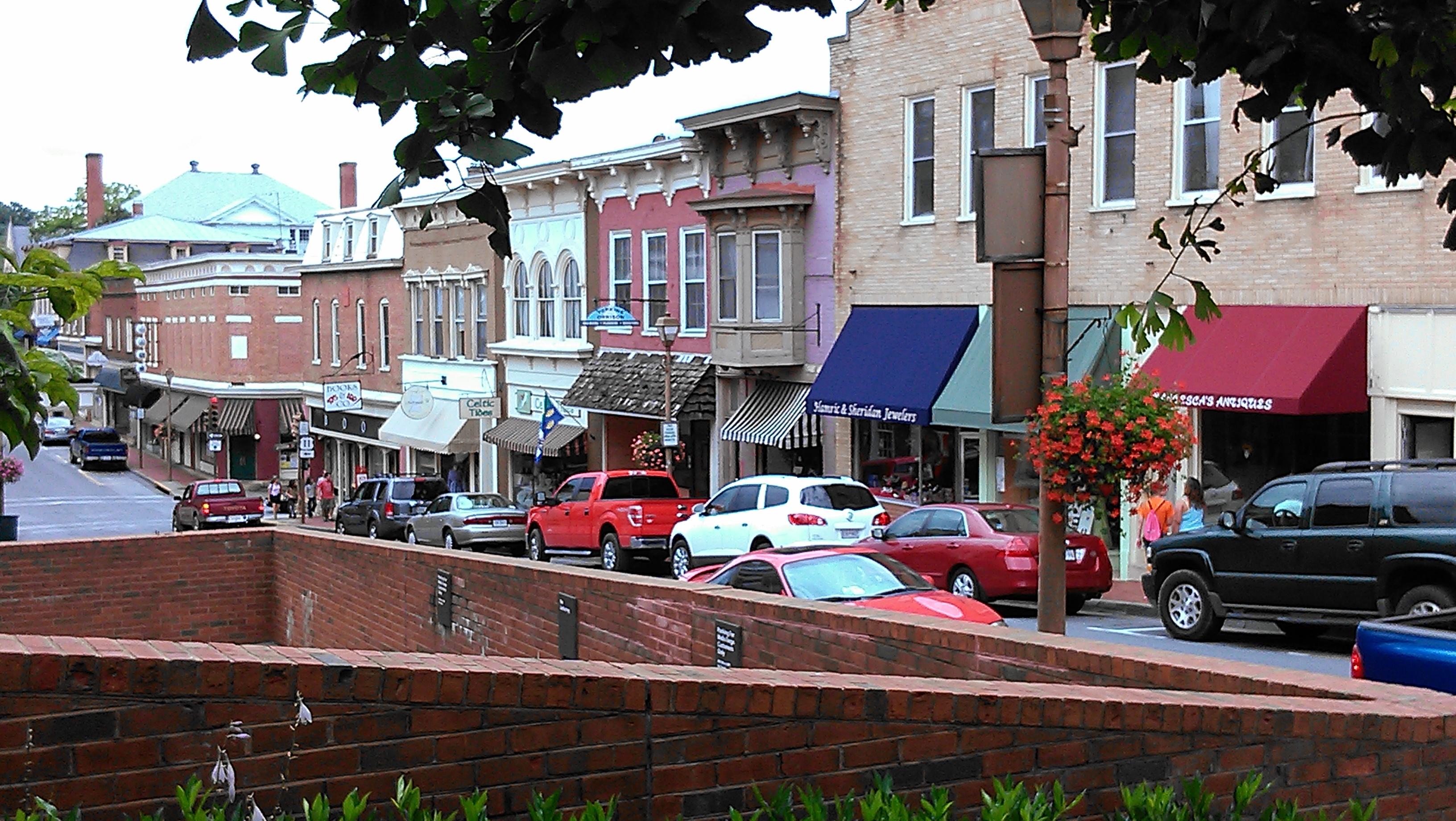Lexingtonians love their star bricks. A sidewalk paved with the star-emblazoned stamped bricks is a sight to behold, the vitrified finishes glistening in a mineral rainbow of reds and purples and browns. Star bricks are such a feature of Lexington’s downtown and older residential neighborhoods that it’s no surprise people think they’re unique to Lexington, but they’re not. You’ll find them in Roanoke, Savannah, and elsewhere, too.
Brick paving has a long pedigree in America. Plain brick pavers were popular for walkways in the colonial period, and in the early nineteenth century Washington and Lee University added brick stairs to one of its buildings so the thundering herd of students wouldn’t thunder as loudly as they would on wooden stairs. In 1870 a Charleston, West Virginia builder named Mordecai Levi had the idea to pave a Charleston street in brick. Levi’s timing was good—with mass production and rail transport bricks were cheap enough that cities could afford to pave entire downtowns with them, and they did.
At the end of the nineteenth century brick plants in Ohio’s Hocking Valley began to manufacture vitrified bricks in a variety of patterns. The glassy vitrification gave the bricks a hard water-impervious finish and the patterns, in addition to providing visual interest, may have helped with traction. The beautiful patterned bricks of the era have withstood the test of time, and today their stars, bull’s-eyes, and hatchings enliven the experience of historic communities across the nation.
Contributed by Dan Pezzoni, Sept 2017


